Intro
Boost health with fiber-rich beans. Discover 5 ways beans high fiber content supports digestive health, weight management, and cholesterol reduction, utilizing soluble fiber, insoluble fiber, and prebiotic benefits.
The importance of fiber in our diets cannot be overstated. Fiber plays a crucial role in maintaining a healthy digestive system, promoting satiety, and even supporting healthy blood sugar levels. One of the richest sources of dietary fiber is beans, which are not only versatile in their culinary uses but also packed with nutrients. Beans are a staple in many cuisines around the world, and for good reason. They are inexpensive, easy to prepare, and can be incorporated into a wide variety of dishes, from soups and stews to salads and main courses.
Beans are a type of legume, and they include a broad range of varieties such as kidney beans, black beans, chickpeas, and lentils. Each type of bean has its unique flavor, texture, and nutritional profile, but they all share a high content of dietary fiber. The fiber in beans is primarily made up of soluble and insoluble fiber, both of which are essential for maintaining a healthy digestive system. Soluble fiber dissolves in water and forms a gel-like substance that helps to slow down digestion, while insoluble fiber does not dissolve and instead helps to add bulk to stool, promoting regular bowel movements.
The benefits of consuming beans as a source of fiber are numerous. Not only do beans help to promote digestive health, but they also support healthy blood sugar levels and can even help with weight management. The fiber in beans helps to slow down the absorption of sugar into the bloodstream, which can help to prevent spikes in blood sugar levels. Additionally, the high fiber content in beans can help to keep you feeling fuller for longer, making them an excellent addition to weight loss diets. With so many benefits, it's no wonder that beans are considered a superfood by many nutritionists and health experts.
Introduction to Fiber in Beans
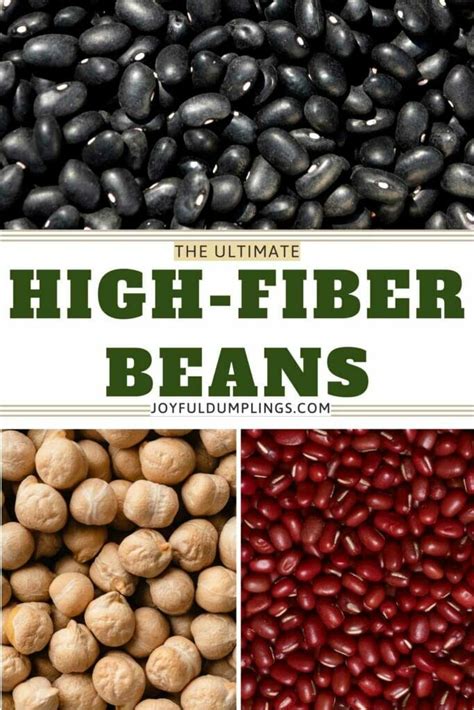
Fiber is an essential nutrient that plays a critical role in maintaining a healthy body. It is found in plant-based foods such as fruits, vegetables, whole grains, and legumes, including beans. The daily recommended intake of fiber varies by age and sex, but most adults need about 25-30 grams of fiber per day. Unfortunately, many people do not meet their daily fiber needs, which can lead to a range of health problems, including constipation, diarrhea, and even an increased risk of chronic diseases such as heart disease and diabetes.
Benefits of Fiber in Beans
The benefits of fiber in beans are numerous. Some of the key benefits include: * Promoting digestive health: Fiber helps to regulate bowel movements, prevent constipation, and support the growth of healthy gut bacteria. * Supporting healthy blood sugar levels: The soluble fiber in beans helps to slow down the absorption of sugar into the bloodstream, which can help to prevent spikes in blood sugar levels. * Aiding in weight management: The high fiber content in beans can help to keep you feeling fuller for longer, making them an excellent addition to weight loss diets. * Reducing cholesterol levels: The soluble fiber in beans can help to bind to bile acids and remove them from the body, which can help to lower cholesterol levels. * Supporting healthy blood pressure: Regular consumption of fiber-rich foods such as beans has been shown to help lower blood pressure in people with hypertension.Types of Fiber in Beans
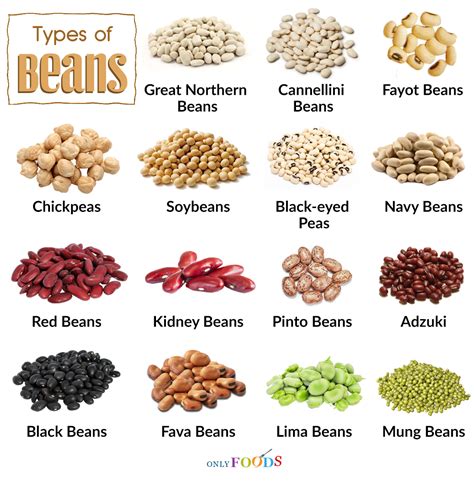
There are two main types of fiber found in beans: soluble and insoluble fiber. Soluble fiber dissolves in water and forms a gel-like substance that helps to slow down digestion, while insoluble fiber does not dissolve and instead helps to add bulk to stool, promoting regular bowel movements. Both types of fiber are essential for maintaining a healthy digestive system.
Soluble Fiber in Beans
Soluble fiber is found in the highest amounts in beans such as kidney beans, black beans, and chickpeas. It is made up of compounds such as pectin, gum, and mucilage, which are responsible for its gel-like texture. Soluble fiber has been shown to have a range of health benefits, including: * Lowering cholesterol levels: Soluble fiber can help to bind to bile acids and remove them from the body, which can help to lower cholesterol levels. * Supporting healthy blood sugar levels: The soluble fiber in beans helps to slow down the absorption of sugar into the bloodstream, which can help to prevent spikes in blood sugar levels. * Aiding in weight management: The high fiber content in beans can help to keep you feeling fuller for longer, making them an excellent addition to weight loss diets.Health Benefits of Fiber in Beans
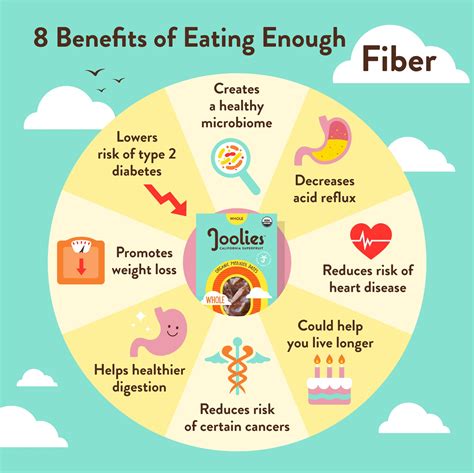
The health benefits of fiber in beans are numerous. Regular consumption of fiber-rich foods such as beans has been shown to:
- Reduce the risk of heart disease: The soluble fiber in beans can help to lower cholesterol levels and reduce inflammation, both of which are risk factors for heart disease.
- Support healthy blood sugar levels: The soluble fiber in beans helps to slow down the absorption of sugar into the bloodstream, which can help to prevent spikes in blood sugar levels.
- Aid in weight management: The high fiber content in beans can help to keep you feeling fuller for longer, making them an excellent addition to weight loss diets.
- Promote digestive health: Fiber helps to regulate bowel movements, prevent constipation, and support the growth of healthy gut bacteria.
Practical Ways to Increase Fiber Intake
Increasing fiber intake can be easy and delicious. Here are some practical ways to add more fiber to your diet: * Start your day with a high-fiber breakfast: Try adding beans, whole grains, or fruits to your breakfast routine. * Snack on fruits and vegetables: Fruits and vegetables are rich in fiber and make great snacks. * Incorporate beans into your meals: Beans are a versatile ingredient and can be added to a range of dishes, from soups and stews to salads and main courses. * Choose whole grains over refined grains: Whole grains such as brown rice, quinoa, and whole wheat bread are rich in fiber and nutrients.Cooking with Beans
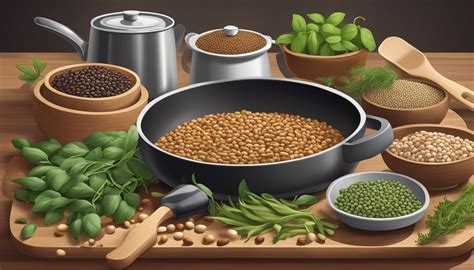
Cooking with beans can be easy and delicious. Here are some tips for cooking with beans:
- Soak beans before cooking: Soaking beans can help to reduce cooking time and make them easier to digest.
- Use a pressure cooker: Pressure cookers can help to reduce cooking time and make beans tender and delicious.
- Add aromatics: Onions, garlic, and spices can add flavor and aroma to bean dishes.
- Experiment with different types of beans: There are many types of beans to choose from, each with its unique flavor and texture.
Delicious Bean Recipes
Here are some delicious bean recipes to try: * Bean soup: A hearty and comforting soup made with beans, vegetables, and spices. * Bean salad: A fresh and flavorful salad made with beans, vegetables, and a tangy dressing. * Bean tacos: A tasty and filling taco filling made with beans, spices, and vegetables. * Bean curry: A rich and flavorful curry made with beans, spices, and coconut milk.Nutritional Value of Beans
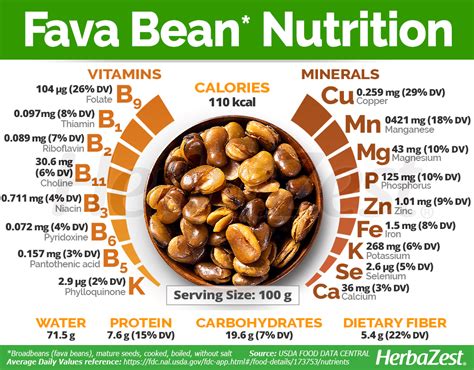
Beans are a nutrient-rich food that provides a range of essential vitamins, minerals, and antioxidants. Here are some of the key nutrients found in beans:
- Protein: Beans are a good source of protein, making them an excellent option for vegetarians and vegans.
- Fiber: Beans are rich in dietary fiber, which can help to promote digestive health and support healthy blood sugar levels.
- Vitamins and minerals: Beans are a good source of vitamins and minerals such as folate, iron, and zinc.
- Antioxidants: Beans contain a range of antioxidants, including polyphenols and flavonoids, which can help to protect against oxidative stress and inflammation.
Common Nutrient Deficiencies
Here are some common nutrient deficiencies that can be addressed by consuming beans: * Iron deficiency: Iron deficiency is a common nutritional disorder that can cause fatigue, weakness, and pale skin. Beans are a good source of iron, making them an excellent option for people with iron deficiency. * Zinc deficiency: Zinc deficiency can cause a range of health problems, including impaired immune function and wound healing. Beans are a good source of zinc, making them an excellent option for people with zinc deficiency. * Folate deficiency: Folate deficiency can cause a range of health problems, including birth defects and anemia. Beans are a good source of folate, making them an excellent option for pregnant women and people with folate deficiency.Conclusion and Future Directions

In conclusion, the importance of fiber in beans cannot be overstated. Beans are a rich source of dietary fiber, which can help to promote digestive health, support healthy blood sugar levels, and even aid in weight management. With their versatility in cooking and rich nutritional profile, beans are an excellent addition to a healthy diet. As we move forward, it is essential to continue promoting the consumption of fiber-rich foods such as beans and to support research into the health benefits of fiber.
Final Thoughts
In final thoughts, incorporating beans into your diet can have a significant impact on your overall health and wellbeing. With their rich nutritional profile and versatility in cooking, beans are an excellent addition to a healthy diet. Whether you are looking to promote digestive health, support healthy blood sugar levels, or aid in weight management, beans are an excellent option. So go ahead, get creative with beans, and start experiencing the numerous health benefits they have to offer.What are the benefits of consuming beans as a source of fiber?
+The benefits of consuming beans as a source of fiber include promoting digestive health, supporting healthy blood sugar levels, and aiding in weight management.
How much fiber should I consume daily?
+The daily recommended intake of fiber varies by age and sex, but most adults need about 25-30 grams of fiber per day.
What are some practical ways to increase fiber intake?
+Practical ways to increase fiber intake include starting your day with a high-fiber breakfast, snacking on fruits and vegetables, incorporating beans into your meals, and choosing whole grains over refined grains.
Can I cook beans in a pressure cooker?
+Yes, you can cook beans in a pressure cooker. Pressure cookers can help to reduce cooking time and make beans tender and delicious.
What are some delicious bean recipes to try?
+Delicious bean recipes to try include bean soup, bean salad, bean tacos, and bean curry. You can also experiment with different types of beans and spices to create your own unique recipes.
We hope this article has provided you with a comprehensive understanding of the importance of fiber in beans and how to incorporate them into your diet. If you have any further questions or would like to share your favorite bean recipes, please don't hesitate to comment below. Don't forget to share this article with your friends and family to help spread the word about the numerous health benefits of beans. Happy cooking and happy eating!
